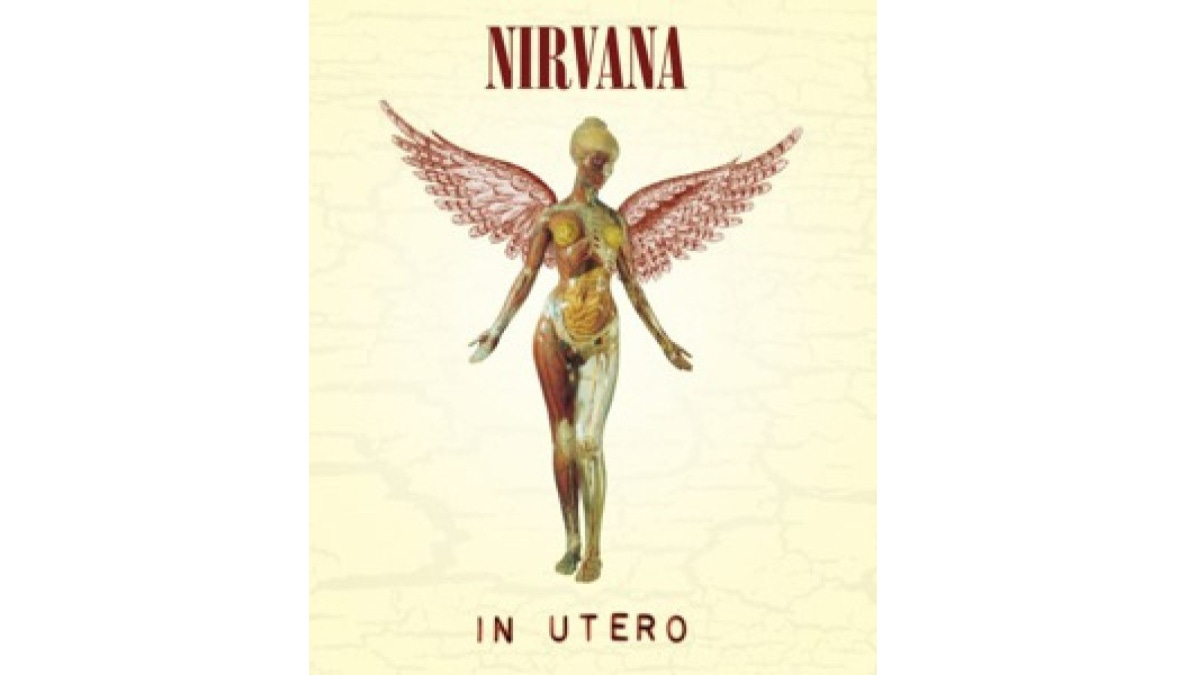
Nirvana were on top of the world before In Utero came out in late 1993, and it solidified them as the most important and influential band of the mainstream alternative rock scene at the time.
Nirvana and producer Steve Albini agreed to record In Utero within a two-week deadline. The band travelled to Pachyderm Studio in Minnesota, where they stayed in isolation while recording. Albini had previously discussed the album's direction with them and found their vision aligned with his style. The sessions mainly involved the band, Albini, and technician Bob Weston. Nirvana ensured minimal intrusion from their label and played their work in progress only to their A&R representative. Albini maintained a policy of ignoring everyone else associated with Nirvana, saying that everyone associated with Nirvana were "the biggest pieces of shit [he] ever met".
After a delay caused by missing equipment, the recording process began, progressing swiftly. The band recorded basic instrumental tracks together, with separate drum recordings for faster songs to capture natural reverb. Kurt Cobain later added additional guitar tracks, solos, and vocals. They kept nearly all recorded takes, as Albini saw himself as an engineer rather than a producer and allowed the band to choose the best ones, as is typical of his style.
Recording concluded in six days, and Cobain found it to be the easiest recording experience they had. The only real disruption during the recordings occurred when Courtney Love arrived, causing tension with her criticisms and confrontational behaviour.
The initial mix of the album took five days. While quick for Nirvana, it was longer than Albini's usual mixing time. They took breaks to watch nature videos, engage in playful activities, and address mixing issues.
However, conflicts arose during the production and mixing stage. Feedback from various parties criticised Kurt's songwriting and found the sound unlistenable. Nirvana’s label had reservations about releasing an album produced by punk idealist and typically underground Albini. The band felt pressure to redo the sessions, but ultimately decided to release In Utero as it was. Some friends of the band appreciated the album's direction, but Kurt initially felt disconnected from it and identified issues with the bass and lyrics.

Albini declined their request to remix the album, as he was concerned that the group’s label and others working with them had perhaps convinced them to change their minds about the album’s initial sound or direction. The band attempted to address concerns during mastering but felt it still fell short of the desired outcome.
Steve Albini expressed doubt about the label's willingness to release the album, while Nirvana denied any pressure to change it. They considered remixing some tracks with other producers, but Steve opposed the idea, maintaining that Nirvana seemed happy with the mixes before they presented it to their label and management. Eventually, producer Scott Litt was brought in to remix singles at a later stage.
The album remained largely unaltered, with the exclusion of “I Hate Myself and Want To Die”, and a remastering. Albini criticised the final mix, stating that it didn't fully capture what he and the band had originally worked on. He alleged that his involvement in In Utero affected his reputation with major record labels, making it difficult for him to find work in the following year.
The album was a commercial success, reaching sales of around 15 million copies worldwide. It reached widespread critical acclaim, although it was not as well received as Nevermind, with some criticising the band for supposedly purposefully writing noisy or abrasive songs that were unlistenable, in order to alienate their mainstream audience. Other criticisms were that the song had too many “filler tracks”, i.e. songs that were added to simply make the record long enough for a standard LP.
In Utero was a step away from Nevermind’s pop sensibilities to a certain degree. The most apt description of the album would be a mixture between Nirvana’s first two albums, Bleach and Nevermind, which makes In Utero all the more special to those who are fans of both of the band’s previous projects. In Utero is raw, unapologetic, and experimental, with beautiful, abstract lyricism, creating a visceral experience.
Industry Pulse
Foo Fighters Announce 2024 UK Summer Tour: The Foo Fighters confirm a new 2024 Summer Tour of the UK, called “Everything Or Nothing At All”, for which the presale is currently active.
Conan O’Brien Hosts Paul McCartney On His Podcast: Conan O’Brien Needs A Friend, the comedian’s podcast, hosted Paul McCartney recently, to discuss Paul’s new Beatles photo exhibition in London, as well as other stories such as how Ringo Starr drank bourbon and 7up.
Inclusive Festival Held For Disabled Artists: The Music Works, a charity, held an inclusive festival, IncFest, in Cheltenham, collaborating with schools and students, to celebrate young disabled artists in England.
Song of the Day
Rats is a bass heavy, aggressive track by grunge legends Pearl Jam, from their 1993 album “Vs.”. The record is a rhythmic, rawer venture for the band, a solid follow-up to their debut “Ten”, and does not disappoint.
100 Albums to Listen to
Nirvana - In Utero
1993’s In Utero (insert link to our In Utero review) is Nirvana’s third and final studio album. Produced by legendary underground sound engineer Steve Albini, the album departed from the polished sound of their breakthrough release Nevermind and showcased a raw, introspective, and at times abrasive musical style. The band stayed somewhat in their alternative rock boundaries, but at times broke through into noise and experimental rock, culminating in a record that calls back to both Bleach and Nevermind, the group’s first two albums, and looks forward towards a heavier, more aggressive future.
The album is characterised by its honest and introspective lyrics, often delving into themes of inner turmoil, societal critique, and personal struggles. The lyrics still maintain their typical abstract nature, but manage to convey much about not only Cobain but the band at the time of recording. Kurt Cobain's songwriting tackles subjects such as depression, identity, and the pressures of fame, with a sense of vulnerability and raw emotion.
Musically, the group presents a diverse range of songs, which Kurt predicted beforehand in a 1992 interview with Rolling Stone magazine, stating, “[Nirvana’s next album will] be more raw with some songs and more candy pop on some of the others. It won't be as one-dimensional”.
8/100 - Subscribe for more
Exploring the Aesthetics and Soundscape of Vaporwave
Vaporwave, a genre that emerged in the early 2010s, has captivated listeners with its distinct blend of nostalgia, irony, and experimental music production. Inspired by the consumer culture of the 1980s and 1990s, vaporwave presents a unique sonic and visual experience that transports its audience to a retro-futuristic realm.
Aesthetics:
One cannot discuss vaporwave without mentioning its distinctive visual aesthetics. The genre draws heavily from retro imagery, incorporating elements such as neon colours, glitch art, pixelated graphics, and a fascination with outdated technology. These visuals often depict shopping malls, corporate logos and vintage computer interfaces, evoking a sense of both nostalgia and critique of consumerism.
Soundscape:
Vaporwave's musical landscape is an amalgamation of samples, often taken from elevator music, smooth jazz, R&B, and easy-listening tunes from the '80s and '90s. These samples are manipulated, slowed down, chopped and looped, creating a dreamy and surreal atmosphere.
The music embraces the idea of "vapor," with warped melodies, lo-fi production, and heavy use of reverb, creating a hazy, otherworldly vibe.
Themes:
Beyond its sonic and visual aesthetics, vaporwave carries a cultural and social commentary. By repurposing and deconstructing commercial sounds from the past, it challenges the notions of consumer capitalism and mass production. Vaporwave artists often explore themes of alienation, hyperreality, and the paradoxes of modern living. Through its ironic and sometimes satirical lens, the genre invites listeners to reflect on the excesses and emptiness of consumer culture.
Influence and Subgenres:
Vaporwave has not only influenced the music landscape but has also spawned various subgenres. Future funk infuses vaporwave with upbeat, danceable rhythms, while mallsoft focuses on creating immersive soundscapes that evoke the atmosphere of an empty shopping mall. Other subgenres like vaportrap and hardvapour incorporate elements of hip-hop and electronic dance music, adding a fresh twist to the vaporwave aesthetic.
Vaporwave’s ideals were undoubtedly fueled by the counterculture and musical underground of the 80s and 90s. Many parallels can also be drawn to other artists with similar ideals that have come up recently, such as the enigmatic, underground group Sex Moron, as consumer culture has certainly increased since the decades that vaporwave takes its sound from and is still relevant today.
Conclusion:
Vaporwave is more than just a music genre. It is a cultural movement that celebrates and critiques the nostalgia-driven consumer culture of the past. With its distinctive visual style, experimental production techniques and thought-provoking themes, vaporwave continues to captivate audiences and inspire artists across various creative mediums.
Lyrical Lament
I'll take a quiet life/A handshake of carbon monoxide/And no alarms and no surprises
Hashtags
#BlackSabbath








